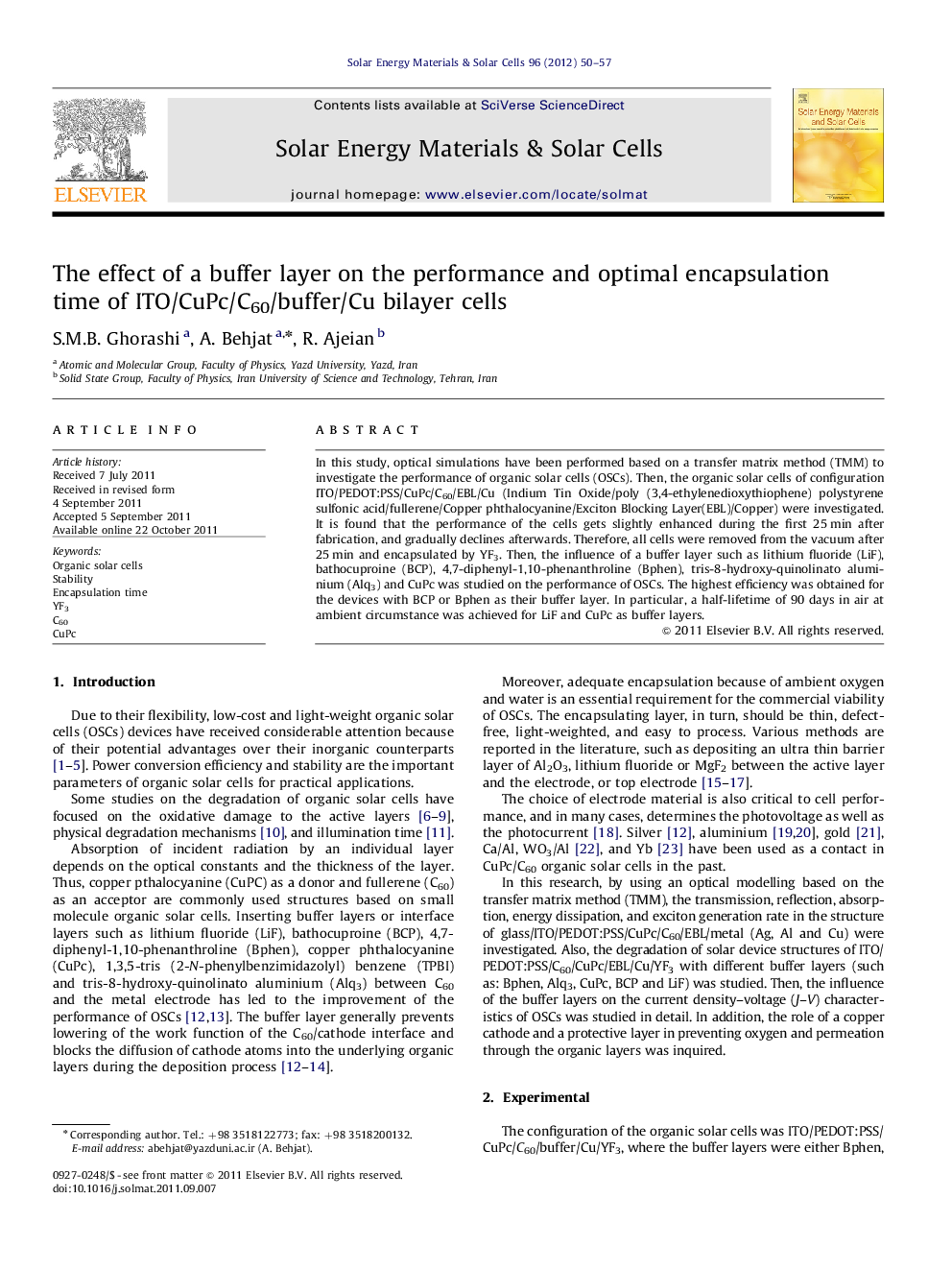| Article ID | Journal | Published Year | Pages | File Type |
|---|---|---|---|---|
| 79464 | Solar Energy Materials and Solar Cells | 2012 | 8 Pages |
In this study, optical simulations have been performed based on a transfer matrix method (TMM) to investigate the performance of organic solar cells (OSCs). Then, the organic solar cells of configuration ITO/PEDOT:PSS/CuPc/C60/EBL/Cu (Indium Tin Oxide/poly (3,4-ethylenedioxythiophene) polystyrene sulfonic acid/fullerene/Copper phthalocyanine/Exciton Blocking Layer(EBL)/Copper) were investigated. It is found that the performance of the cells gets slightly enhanced during the first 25 min after fabrication, and gradually declines afterwards. Therefore, all cells were removed from the vacuum after 25 min and encapsulated by YF3. Then, the influence of a buffer layer such as lithium fluoride (LiF), bathocuproine (BCP), 4,7-diphenyl-1,10-phenanthroline (Bphen), tris-8-hydroxy-quinolinato aluminium (Alq3) and CuPc was studied on the performance of OSCs. The highest efficiency was obtained for the devices with BCP or Bphen as their buffer layer. In particular, a half-lifetime of 90 days in air at ambient circumstance was achieved for LiF and CuPc as buffer layers.
► Optical simulations and optimization of organic solar cells are presented. ► The effect of different cathode metals on the exciton generation rate is studied. ► Cells performance by different buffer layers is studied. ► Copper cathode and YF3 encapsulations improve half-lifetime of the cells.
